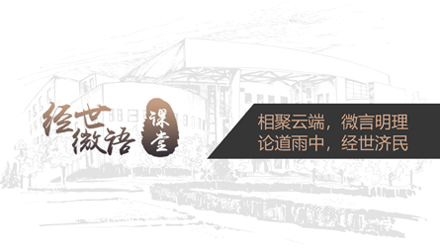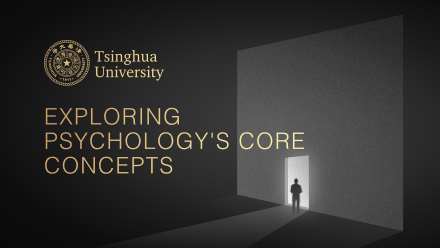
当前课程知识点:History of Chinese Architecture Part I > 6 Architecture of the Five Dynasties’ period and the Song, Liao and Jin dynasty > Section 2 > Gardens of the Song, Liao and Jin dynasty1
返回《History of Chinese Architecture Part I》慕课在线视频课程列表
返回《History of Chinese Architecture Part I》慕课在线视频列表
我们再来看看苑囿
苑囿是皇家园林的另外一个词
两宋皇家苑囿
先来看看北宋
北宋汴梁的苑囿
首先我们看出来变化
我们知道中国历代的帝王
非常重视苑囿的建设
从唐代的上林苑 汉代沿用
到隋唐时期的禁苑 长安禁苑
洛阳神都苑都是极大的园林
但是到了北宋 到了汴梁
这个条件没有了
中原地区寸土寸金
土地本身资源就很匮乏
宫殿和城市占了大面积的土地
如果再大面积地去围成苑囿
作为皇帝去享乐 围猎
是不大可能了
而且那会儿人口也多了
所以它不可能建成那样
大规模的苑囿
但是它仍然重视造园
北宋东京皇家园林
它包括了大内的御苑
行宫的御苑
大内御苑里有后苑 有延福宫
有艮岳 艮岳大家很熟悉
行宫御苑里头有撷芳园 景华园
这在城里
城外还有琼林园 宜春园
玉津园 金明池 宜春苑
我们从这张图可以看出
大致的园林分布
分布得很多
但是规模不是很大
因为它土地限制
《宋史》上记载说
宋代皇家园苑有四处
园苑四 玉津 瑞圣
宜春 琼林苑
掌种植蔬莳以待供进
修饬亭宇以备游幸宴射
这里给出两个功能
这个园林里头带有一点种植蔬菜
作为皇帝特供的 蔬莳
就是皇家的后菜园
同时里头有亭榭 楼阁
皇帝还要去游玩
相当于皇帝的后花园
城西的金明池后来就扩展了
一个新的园子
也纳入到琼林苑管
算琼林苑的一部分
而且这个园林 非常地开放
我们想象不到 皇家园林
但是它通常是可以给百姓开放的
我们在《东京梦华录》里头看到
游人游览金明池和琼林苑的这个过程
它这么描写的
说 池在顺天门外街北
周围约九里三十步
又用了这个数
说明这个数可能比金中都还要早
金中都宫城还要早
用了九里三十步
所以这个数很吉祥 后来大家也用
周围约九里三十步
池西直径七里许
入池门内南岸
西去百余步
有面北临水殿
还有很多描述了
五殿正在池之中心
池的中心有一个五殿
不禁游人
特别重要 不禁游人
殿上下回廊
皆关扑钱物饮食伎艺人作场
各种杂耍啊 小卖啊
在这里作场 摆摊 练滩
勾肆罗列左右
勾肆就是娱乐场所 勾栏瓦肆
门相对街南有砖石驼砌高台
上有楼观 广百丈许
曰宝津楼
车驾临幸
观骑射百戏于此池之东岸
在东岸有一个楼阁
皇帝来了坐在上面
下面老百姓游玩 杂耍 娱乐
他就看热闹
相对比较开放的一个环境
我们知道唐代的禁苑
是绝对进不去的
上阳宫也是个花园
神都苑 禁苑 西苑都是这样的
后来的明清三山五园
也完全禁止了
圆明园 颐和园
在那个时候谁能进得去
在宋代十二世纪这么开放
反映了宋代社会的开放程度
宋代社会大概是历史上
封建王朝里最为开放
文化程度最为高的时代
这是《金明夺标图》
是有一张宋画大致地再现了
宋代金明池的这个空间感觉
我们看中间有五殿 外面有宝津阁
里头还有龙船 龙舟
还有赛舟的这种形象
沿湖满是熙熙攘攘的人
这就可以看出来
除了这些园林以外呢
汴梁城还有一座重要的园林叫艮岳
艮岳是因为风水的原因建造的
由于宋代的皇帝大概
好像在子嗣的绵延上
好像有点问题
宋徽宗的时候
然后这个风水师说
在你的东北方向
按照五音姓例的关系
按赵姓的发音
你在风水位置上
应该在东北位置上要盖一座高山
那干脆你就盖个园子而已
他就盖了一个艮岳
艮就是在东北方向
岳就是山的意思
实际上是以山石为主的园林
那么艮岳呢 很多记载了
我们看明代这么说的
说山周十余里
其最高峰一峰九十步
上有亭曰介 介亭
分东 西二岭 直接南山
山之东有萼花堂
有书馆 八仙馆 紫石岩
栖真嶝 览秀轩 龙吟堂
山之南则寿山两峰并峙
有雁池 噰噰亭 北直绛霄楼
山之西有药寮 有西庄
有巢云亭
我们可以看出来
艮岳是以山景为主
金明池是以水景为主
我们再来看南宋的临安御苑。
关于临安有两本书
一本叫《梦梁录》
一本叫《武林旧事》
是对临安城的详细的描述
这两本书对于我们了解
这两座中古时代的城市非常有帮助《
《梦梁录》记载
临安城里还有聚景园 有东园
这主要是太上皇和太后们光顾的地方
聚景园在临城郭的北桥清波门外
旁边有聚景桥
旧名西园
宋孝宗奉上皇游幸
斥浮屠之庐九 以附益之
旁边盖了一些寺院 规模不是很大
后来这个聚景园变成了一个商业交易场所了
奇珍异果和各种美味特别集中的地方
说明它是开放的 可以在这儿摆摊
聚景园之秀莲新藕 蜜筒甜瓜
椒核枇杷 紫菱 碧芡 林檎 金桃
蜜渍昌元梅 木瓜豆儿 水荔枝膏 金橘
水团 麻饮芥辣 白醪凉水
冰雪爽口之物
很多 可以各种东西都买到
文献记载 太后游幸的时候
还有很多游人在旁边
院中有山有湖 有亭有堂
有幽奥 非常曲奥的地方
也有非常平朗的地方
虽然蜿蜒曲折但不雄大
不乏精雕细刻
委婉迂纡的感觉
所以它已经开始为后来的园林
那种江南园林
曲径通幽 迂纡曲折
奠定了很多艺术上的基础
所以园林也是个逐渐发展的过程
我们从《钱塘观湖图》
可以看出当时园林的情况
和当时南宋临安城的一些大山水情况《
《焚香祝圣图》也可以看出来园林景观
还有西湖 沿南宋临安最大的园林
其实是个公共园林 就是西湖
西湖当然经过很多代的
唐代就有了 我们叫所谓白堤 苏堤
白堤跟白居易有关系
苏堤跟苏东坡有关系
西湖是历代经营
当然中间也出现过一些问题
在宋代的时候 曾经有人提出来
说土地这么紧张 西湖干吗欣赏
干脆把它变成稻田算了
曾经就有人提出这个倡议给皇帝
皇帝让大家议论
大家议论 文人们很多人还是反对 说你这个变成稻田不行
他反对的理由说
我西湖有蓄水 调节水的功能
它还不是从景观上(反对)
但确实给我们保存了一个非常经典的中国古典园林的一个景观《
《武林旧事》描写西湖 它说
西湖天下景 朝昏晴雨
四序总宜
杭人亦无时而不游
而春游特盛焉
杭州人喜欢游西湖
若把西湖比西子
浓妆淡抹总相宜
所以西湖是代表了一个中国园林的一个经典的景观
这里还有南宋的《西湖春晓图》
西湖应该是中古时代中国人所创造的
一座大型城市山水园
而且带有公共园色彩
中国公共园最早是从唐代长安城就有了
长安的曲江芙蓉苑
其实就是公共园
那是七世纪的事情
中国园林不同于日本园 不同于欧洲园的特点
是建筑大量的介入园林
而这个也是在宋代造园摸索的一些艺术的路径
好 我们可以看到这张图《
《敕赐天竺名山胜境御览铜版杭城西湖四十八景全图》
这个好像不同朝代都有些版本
现在据说还有些世面上卖的所谓的古图《
《苏堤春晓图》 苏堤
这是西湖的重要一堤《
《六桥烟柳图》 是个断桥
按照堤上的很多桥
六桥烟柳图 都是很有意思的
-1 An outline of Chinese Architecture
--Characteristics of Chinese Architecture
--The historical division of Chinese Architecture
--A discussion of the typologies in Chinese Architecture
-2 An outline of Ideas about ancient architecture
--Ancient city planning thoughts and two opposing arguments
--Principles of ancient architecture
--Ideas about ancient architecture
--Ideas about ancient architecture
-Homework
-Section 1
--Early civilization and architectural morphology
--Architecture in the Xia and Shang dynasty
--Architecture in the Xia and Shang dynasty
--Architecture in the Zhou dynasty
-Section 2
--Civilization and cities of the Qin and Han dynasty
--Palaces of the Qin and Han dynasty
--Residential architecture, tombs and other types of architecture
-Homework
-Section 1
--Cities and palaces of the Three Kingdoms, the Jin dynasty and the Southern and Northern Dynasties’ p
--Cities and palaces of the Three Kingdoms, the Jin dynasty and the Southern and Northern Dynasties’ p
--Cities and palaces of the Three Kingdoms, the Jin dynasty and the Southern and Northern Dynasties’ p
--Development of Buddhism and the prosperity of Buddhist architecture
--Buddhist architectural remains in the Southern and Northern Dynasties’ period
-Section 2
--Grottos in the Southern and Northern Dynasties’ period
--Development of wood structures as seen from grottos in the Southern and Northern Dynasties’ period
--Gardens from the Qin and Han dynasty to the Southern and Northern Dynasties’ period
-Homework
-Section 1
--Chinese culture of the Sui and Tang dynasty
--Two capitals of the Sui and Tang dynasty: Chang’an and Luoyang
--Two capitals of the Sui and Tang dynasty: Chang’an and Luoyang
-Section 2
--Li-fang and residential architecture in Chang’an and Luoyang
--Important buildings in the Sui and Tang dynasty palaces
--Gardens of the Sui and Tang dynasty
-Homework
-Section 1
--Religious architecture in the Sui and Tang dynasty
--Wood Buddhist Halls in the Sui and Tang dynasty
--Brick and masonry towers in the Sui and Tang dynasty
-Section 2
--Architectural style and design method in the Sui and Tang dynasty
--Wood frame technology in the Sui and Tang dynasty
--Brick and masonry technology in the Sui and Tang dynasty
--Progression of architectural technology and development of art
-Honework
-Section 1
--History of the Five Dynasties’ period and the Song, Liao and Jin dynasty
--Bianliang of Northern Song and Lin’an of Southern Song
--Pingjiang Prefectural City, Southern Capital of Liao and Central Capital of Jin
-Section 2
--Palaces in Bianliang of Northern Song and Lin'an of Southern Song
--Palaces in the Central Capital in the Jin dynasty
--Gardens of the Song, Liao and Jin dynasty1
--Gardens of the Song, Liao and Jin dynasty 2
-Homework
-Section 1
-Section 2
--Double-eave single-storey wood hall
--Multi-story wood structure s in the Song, Liao and Jin dynasty
-Homework
-Section 1
--Brick and masonry pagodas in the Song, Liao and Jin dynasty
--Brick and masonry pagodas in the Song, Liao and Jin dynasty
--Brick and masonry pagodas in the Liao and Jin dynasty
--Brick and masonry pagodas in the Song dynasty
--Brick and masonry pagodas in the Song dynasty
-Section 2
--A summary of the Yingzao-Fashi
--video
--video
--video
--video
--video
-Homework




